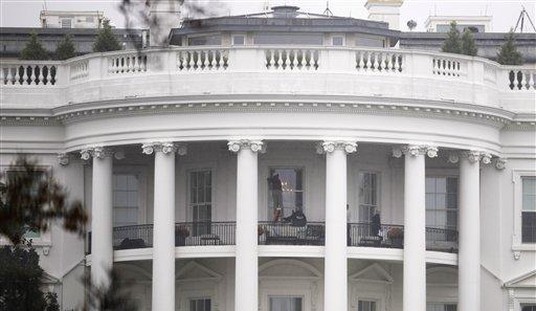“No Sales Bump (Yet) for Redesigned Newsweek,” the New York Observer reported in 2009:
Newsweek underwent a big splashy redesign in late May in the hope that it could turn around the magazine’s sagging fortunes, but so far there hasn’t been a considerable bump in newsstand sales.
Newsweek sold an average of 66,702 copies off the newsstand in its first six weeks since the redesign versus the 66,533 issues that it averaged for the previous 18 issues in 2009, according to the Audit Bureau of Circulations’ Rapid Report.
More troubling, in the last four weeks that numbers are available, the magazine’s sales slid each week from 85,000 copies sold to 75,000 to 67,100 to 50,000. The ABC numbers are available through its June 29 issue.
Back then, Business Insider claimed it was a case of addition through subtraction, much like Spinal Tap benefiting from its more “selective” (read: smaller) audiences:
Here’s a hint for the Observer’s John Koblin as he waits for the sales spike.
Stop. It’s not coming. It’s not supposed to.
For months now, Newsweek has made it clear that, in something of a naked attempt to capture the Economist‘s success, it intends to become a less widely-read, but more profitable magazine.
The idea is that by putting the magazine on fewer newstands and raising its subscription rates, the magazine will be able to simultaneously lower printing costs and dwindle its reader-base to a wealthier group that advertisers will pay higher rates to reach.
As Business Insider half-jokingly wrote, “So if anything, it’s very impressive that Newsweek newsstand sales have remained flat even as its sold on fewer newsstands.”
Flash-forward to 2011, and Tina Brown’s new regime is certainly earning all 100 pennies that Sidney Harman (who passed away in April at age 92) paid for the magazine last year, with continued very-impressive flat sales, that are even smaller than the old-regime’s numbers during their death throes.
In other words, no sales bump (yet) for redesigned, sold-off, redesigned once again Newsweek:
Tina Brown has courted controversy with some of her recent Newsweek cover choices. Now, newly available sales numbers are showing that those covers did not necessarily translate into the kind of spike that she might have been hoping for.
Newsweek had been struggling for years, leading to its sale for just $1 a year ago, and then its merger with Brown’s The Daily Beast. The hope was that a high-profile editor like Brown, with her cred from Vanity Fair and The New Yorker, might ignite consumer interest in the publication. But even her controversial covers don’t seem to have produced more than average sales. Though to be fair, given the current state of the magazine world, and especially of weekly newsmagazines, just keeping sales from dropping might be seen as a victory (of sorts).
The most recent example of Brown’s attention-grabbing covers, the Aug. 15 issue featuring a glassy-eyed Michele Bachmann and the headline “The Queen of Rage,” generated a high degree of media interest, including much fulminating from the right, which saw the portrayal as an example of media bias against conservative women. After all the attention, 47,225 copies of the issue moved off the rack, according to Newsweek‘s own figures. (Three other industry sources with access to Newsweek’s numbers gave figures ranging from as few as 35,000 up to 48,000 copies.)
Even assuming the highest figure is correct, the issue performed just a little above average; the magazine’s single copy sales averaged 46,561 per issue in the first half of 2011. (That number reflects a wide range—from about 29,000 sales before Brown to about 89,000 for her March 28 “Apocalypse Now” issue.)
That last issue’s numbers were inflated due it being on the stands an extra week, or as Mickey Kaus, briefly a veteran of the magazine himself quipped, “Newsweek Maintains Meaningful Silence:”
The Newsweek with the “Apocalypse Now” cover (featuring a giant wave) is apparently a double issue, meaning it will sit on the stands this week while competitors produce fresh editions. An alert emailer writes:
Can you imagine … what people would be saying if any Newsweek editor other than Tina Brown had taken a week off (because of a special “tsunami” double issue) during a time of HUGE war news and furious war debate? In the old days, Newsweek would have simply reversed itself and hustled out an issue.
That tsunami cover just sits there, dead, on the newsstand …
So “hot”!
I can think of circumstances in which an editor might find skipping a week appealing enough to justify missing some news–say, if printing and distributing each issue put you many thousands of dollars further in the hole. …
Tina’s magazine should embrace the silence more often. It’s ever-so-zen, you know. Sort of like a jazz odyssey signaling yet another artistic rebirth.











Join the conversation as a VIP Member